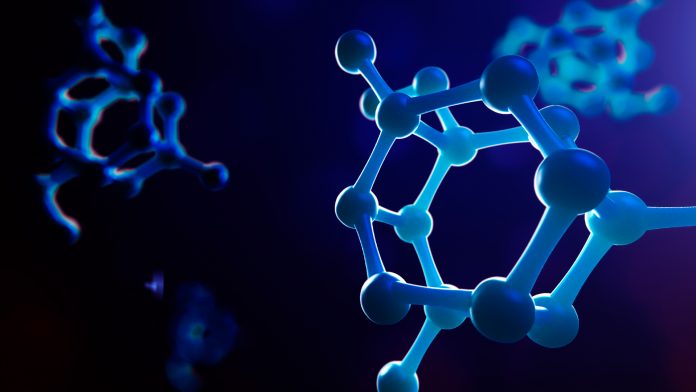Scientists have developed a catalyst that turns three monomer mixtures into diblock dialternating terpolymers in one single step.
A catalyst developed at King Abdullah University of Science and Technology (KAUST) could be the key to structural diversity in polymer materials and industrial-scale polymerisations involving multiple monomers. The catalyst transforms a mixture of three monomers into well-defined, ordered diblock terpolymers in one step.
Block copolymers comprise at least two polymer segments, each derived from different monomer species, combining the properties of these segments in the same molecule. This makes them appealing for a wide range of applications, from the development of thermoplastics to biomaterials for drug deliveries.
Chemists have relied on two-step polymerisations in one or two separate vessels to synthesise block copolymers. A ‘two-pot/two-step’ polymerisation requires isolating the first segment before proceeding with the next reaction, which is cumbersome and costly.
A ‘one-pot/two-step’ approach
A ‘one-pot/two-step’ approach bypasses this isolation step, yet requires a so-called living polymerisation, where, once the first monomer is consumed, the growing chain remains reactive to accept another monomer and as a result, both monomers are fully converted. However, this can lead to unwanted side reactions if the second monomer is not added in time.
Nikos Hadjichristidis and co-workers devised a ‘one-pot/one-step’ approach to produce diblock terpolymers, in which three monomers form two different alternating copolymer segments. “This is the simplest method,” explained post doctorate fellow Jiaxi Xu, who co-led the study.
Polymerisations involving three monomers usually produce random terpolymers. Therefore, it was crucial to find a smart catalyst to regulate the monomer sequence during the polymerization, Xu explains.
Auto-switchable phosphazene-based catalysts
The researchers discovered that an auto-switchable phosphazene-based catalyst can stimulate the polymerisation of one monomer and inhibit that of others. The ability to switch the catalyst depends on its ability to exchange protons with the growing chain.
“When the first monomer is consumed completely in the alternating copolymerization with the second monomer, the catalyst turns on to promote the alternating copolymerization of the excess of the second monomer with the third one,” Xu said.
Furthermore, selecting cyclic monomers from the nitrogen-containing N-sulfonyl aziridine, the oxygen-containing epoxide and the anhydride families was essential for the terpolymerization. “We had previously synthesised block copolymers consisting of one alternating copolymer and a homopolymer using aziridines and anhydrides,” Xu commented. This suggested that three monomers with different reactivity would effectively enable the ‘one-pot/one-step’ preparation of diblock dialternating terpolymers.
The researchers discovered that the catalyst promoted the aziridine/anhydride alternating copolymerisation before switching to the epoxide/anhydride alternating copolymerisation, demonstrating its high monomer selectivity and kinetic control.
The team intends to further tap into aziridine, epoxide and anhydride terpolymers. “These families contain hundreds of monomers, which will provide extremely diverse diblock dialternating terpolymers for many potential industrial applications,” Hadjichristidis concluded. “This study also opens new horizons for the terpolymerisation of other monomer families.”









